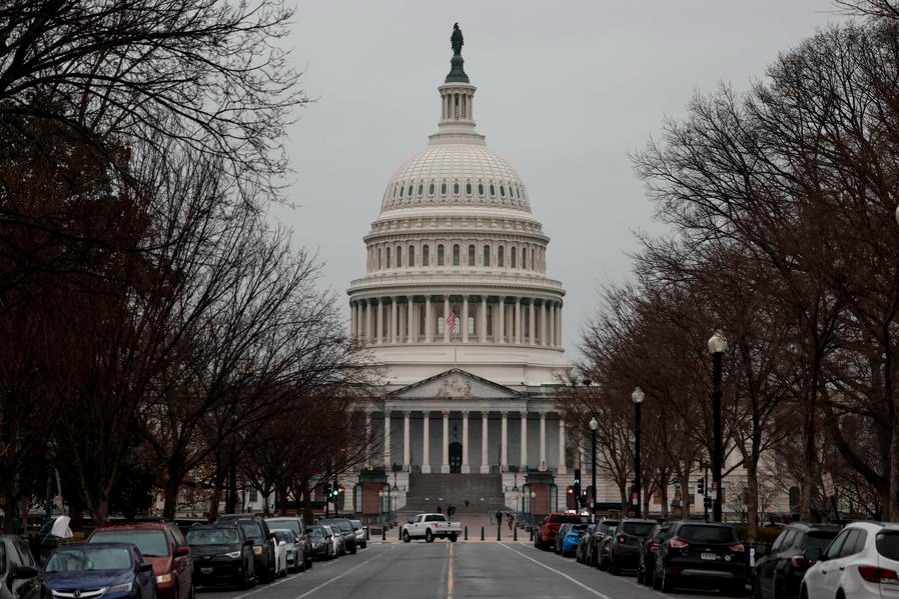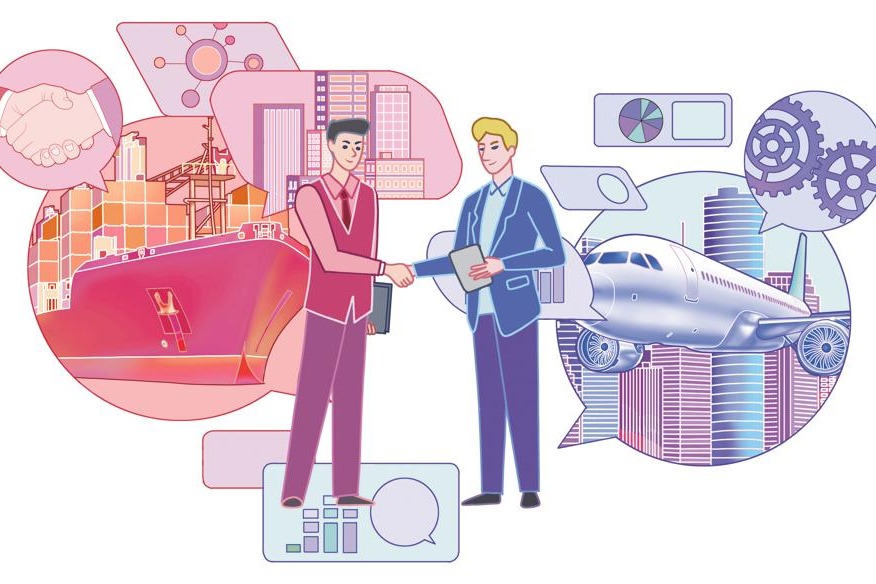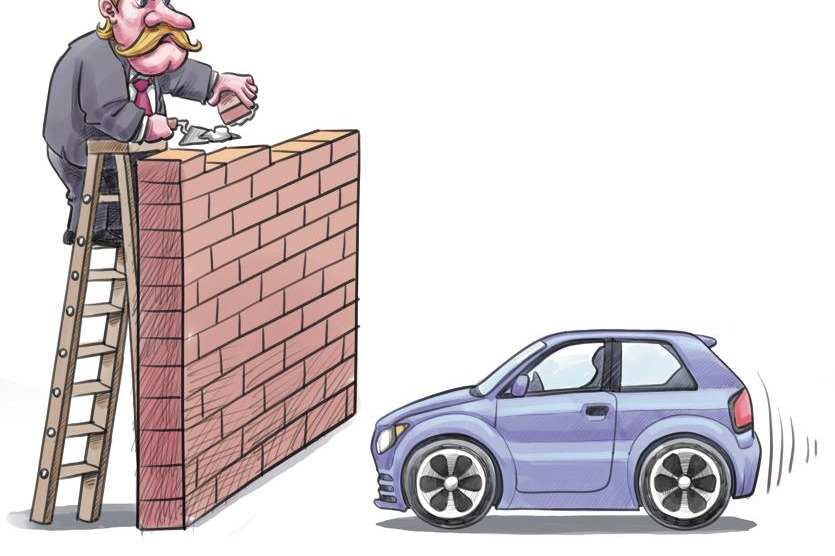So near yet so far for Japan and India

Editor's note: Indian Prime Minister Narendra Modi concluded his two-day visit to Japan on Monday after enjoying the hospitality of Japanese Prime Minister Shinzo Abe. During the visit, the two countries pledged to enhance cooperation on economic and security issues in order to build an open and free Asia-Pacific region. What does Modi's visit to Japan mean for the region? Three experts share their views on the issue with China Daily's Liu Jianna. Excerpts follow:
Seemingly in harmony but actually at variance
Fu Xiaoqiang, a research fellow at the China Institutes of Contemporary International Relations
Can Japan and India comprehensively strengthen practical economic cooperation, particularly along the Asia-Africa Growth Corridor? This is the most important question Modi's visit to Japan has raised, especially because India's massive market and rapid growth are huge attractions for Japanese investors.
But any new security moves to help the United States to contain China's growing influence in the Asia-Pacific region deserve China's special attention.
India has signed two of the three military agreements with the US that are required to forge a de-facto military alliance. And the signing of the third pact-the Basic Exchange and Cooperation Agreement-would make the two countries military allies.
Another important question is: Will Japan and India propose new infrastructure initiatives to contend with the Belt and Road Initiative?
At the strategic level, India's "Look East" policy and Japan's "Indo-Pacific" strategy converge as much as diverge in concern and vision. For India, exchanges and cooperation with the Association of Southeast Asian Nations member states are the first priority while collaborating with Japan and the Republic of Korea also constitutes a major part of its Look East policy. So there is plenty of room for cooperation.
But arguably India is unwilling to become an integral part of the US alliance system. Instead, India seems keen to strike a balance between the US and China as its relationship with China gets back on track.
More often than not, India's poor infrastructure and investment environment have prevented Japanese investors from betting on India. Thus their bilateral trade volume is only a fraction of the China-Japan or China-India trade volume. Still, it can be said Japan and India have enough room to develop economic and trade ties.
A peaceful Asia-Pacific region will benefit all
Sun Shihai, director of the China Center for South Asian Studies, Sichuan University
Modi's visit to Japan puts the focus on India-Japan economic cooperation. As much as India covets Japan's technology and capital, Japan values India's massive market of 1.32 billion people.
India's relatively inward looking policies and investment-unfriendly climate prevented Japan from investing in the South Asian country in the past. But things have changed in recent years. With the fastest growth rate among the world's major economies and notable improvement in the business environment, India has become attractive to Japan. Over the years, the two sides have jointly proposed several development initiatives-the Asia-Africa Growth Corridor for instance, which aims to improve connectivity in Asia and Africa.
Like always, economic cooperation was a key part of Modi's visit to Japan. But the two sides also discussed cooperation on security, which deserves attention as they have common security concerns in the Asia-Pacific region. In fact, New Delhi and Tokyo had established mechanisms for security dialogues in the past, too, and have held joint military exercises so as to develop and deepen collaboration on security.
But despite gradually becoming an investment-friendly country, India still has many problems which hinder deeper economic cooperation with other countries. For example, the Japan-financed high-speed railway in India has run into difficulties, which may delay the project's completion date.
As to the broader quadrilateral alliance or "Quad" (involving the US, Japan, India and Australia), there are a number of disagreements among the four countries. First, the other three countries may not approve of the "Indo-Pacific strategy" of the US, which reeks of Cold War and zero-sum mentality. In fact, Modi clarified during the Shangri-La Dialogue in June that the "Indo-Pacific region" is a geographical concept, rather than a geopolitical one. He has also objected to clique forming with a certain country.
And Japan's Asia-Pacific strategy differs from that of the US. Therefore, it will be quite difficult for the US to establish an alliance that targets China, by using its "Indo-Pacific strategy".
As such, China should be strategically confident and calmly view the turn of events in the Asia-Pacific as both India and Japan hope to maintain security and stability and abhor the idea of another Cold War.
Huddling together in search of comfort
Zhou Yongsheng, a professor at and deputy director of Japanese Studies Center, China Foreign Affairs University
By hosting Modi in his villa, Abe has sought to build a personal rapport with the Indian prime minister and return the latter's favor during his visit to India last year.
Modi's visit to Japan indicates that cooperation between these two countries could deepen. If Japan is trying to woo India keeping in mind that China is its primary competitor, New Delhi aims to check Beijing's growing influence in the Asia-Pacific through its cooperation with Japan. Tokyo and New Delhi are huddling together for comfort, with Abe and Modi affirming cooperation on the economic and security fronts to build a free and open Asia-Pacific. But proud that India is, it wouldn't want to play just a supporting role in the strategy of another country, Japan included.
Tokyo and New Delhi are expected to deepen cooperation on high-speed railway and nuclear energy, because Japan is keen to export its nuclear overcapacity as the development of its domestic nuclear energy industry ceased in the wake of the earthquake and tsunami on March 11, 2011. Moreover, India prefers Japan to China when it comes to cooperation on high-speed railway because it is worried about China's growing influence in the region and beyond.
That Modi visited FANUC Corporation, one of the world's largest robot makers, shows his ambition to combine India's expertise in software with Japan's advanced hardware technology in order to promote bilateral investment and cooperation.
Yet India's not-so-friendly business climate poses the biggest challenge to closer economic ties. For instance, it is difficult for Japanese investors to make huge investments in India as the latter is still struggling with tedious decision-making processes and restrictive policies. No wonder the innumerous economic and trade talks have resulted in only limited action on economic cooperation in the past, as reflected in the dismal $13.61 billion Indo-Japanese trade volume in 2016-17 compared with $84.4 billion between China and India in 2017.

































